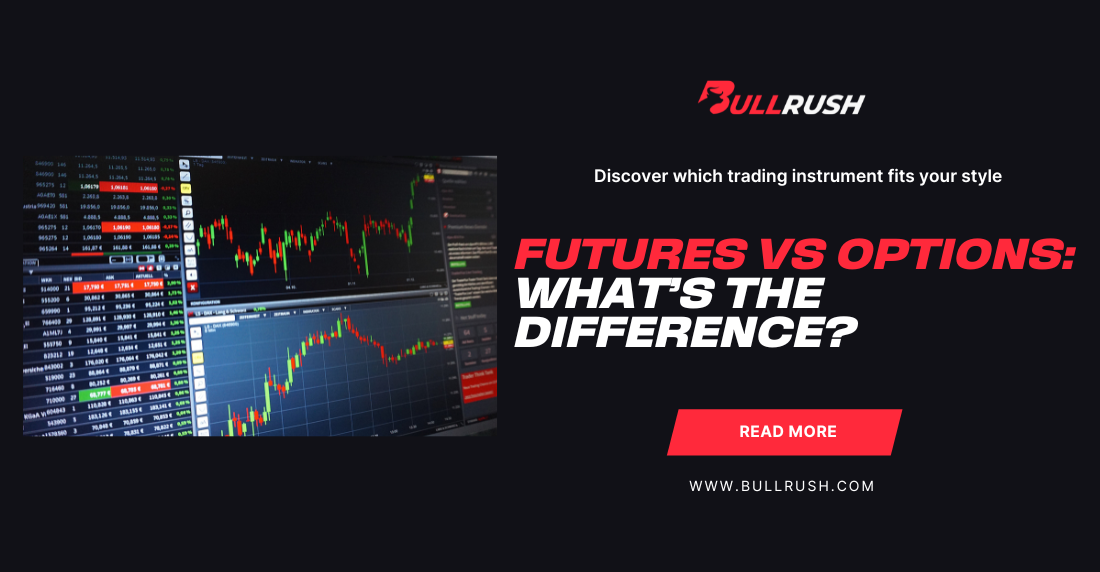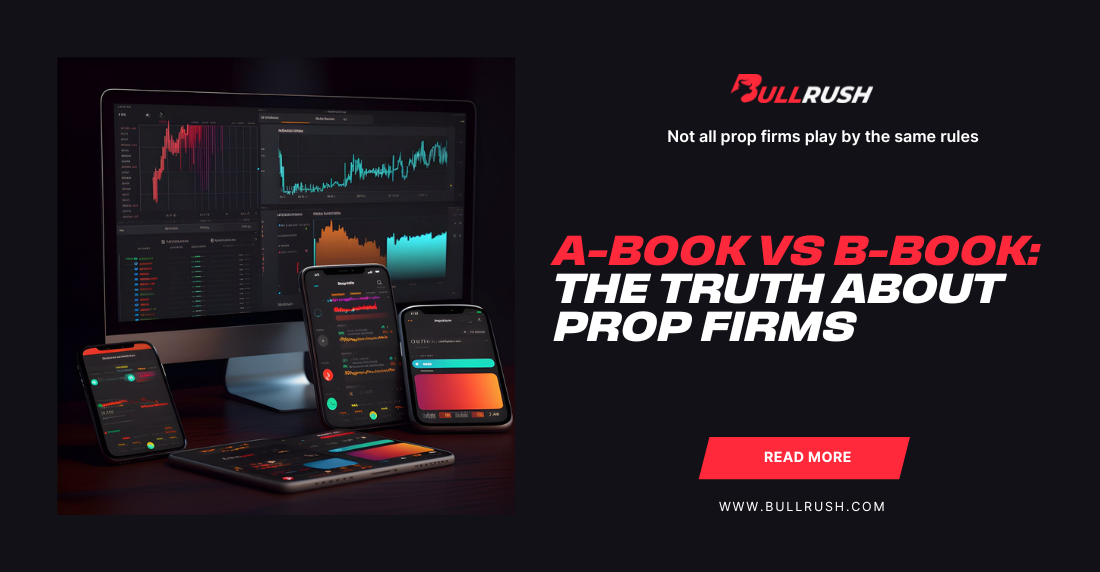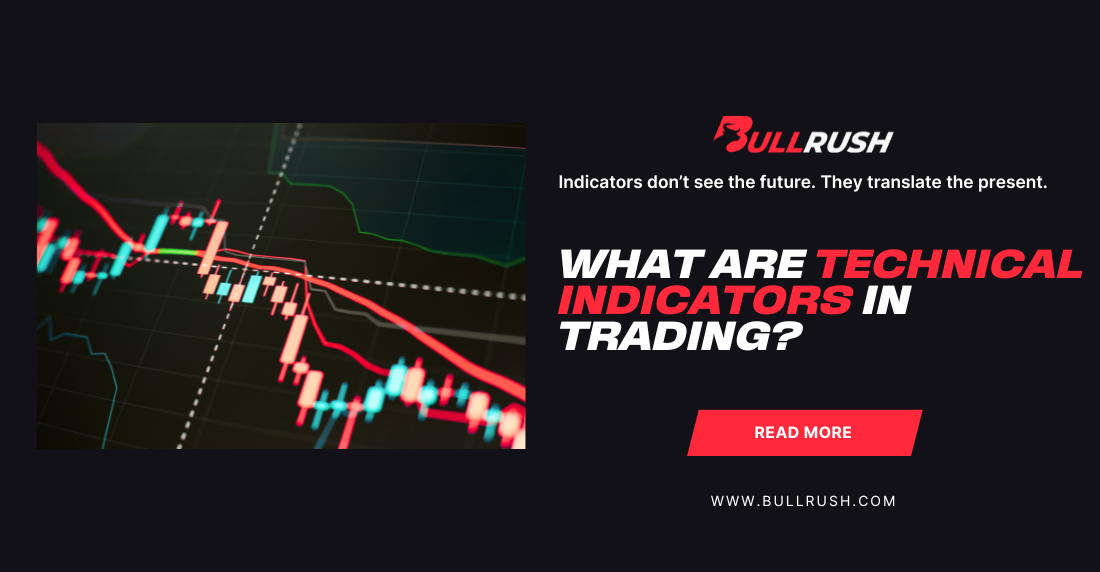
Futures vs Options: What’s the Difference?
One futures trade can wipe your account. An options trade can expire worthless even if you were right. But which one is for you: futures vs options?
Traders often dive into futures or options without fully understanding the fundamental difference: obligation vs. choice. Futures are fast, leveraged, and binding: you’re locked into the deal until expiry or closeout. On the other hand, options offer flexibility and strategic depth, giving you the right, but not the obligation, to act.
At BullRush, we see both instruments used in real-time competitions, and the results speak volumes. Some traders thrive with the raw power of futures. Others win by mastering the strategic nuance of options.
In this article, we’ll break down the differences between futures vs options: structure, strategy, and risk, so you can decide which tool best fits your trading style.
1. Futures Contracts: Binding and Straightforward
Two parties enter a contract agreeing to buy or sell an asset at a predetermined price on a specific future date. There’s no escape clause; both sides are obligated to settle or roll over the contract. Futures are exchange‑standardized (CME) and mark‑to‑market daily on margin accounts.
When you buy futures, you’re betting the price will rise; when you sell futures, you profit if the price falls. It’s a 1D directional tool using leverage for capital efficiency.
Tip: Always monitor your margin and drawdown limits: markets can whip‑saw overnight, and leverage can amplify both profits and losses.
Points:
- Contract obligates both parties at expiration
- Standardized and exchange‑traded
- Pure directional exposure with leverage
- Requires daily mark‑to‑market and margin checks
2. Options Contracts: Flexible and Strategic
On the contrary, options give the right, but not the obligation, to buy (call) or sell (put) an underlying asset at a strike price before or at expiration. The buyer pays a premium for that right, and may let the option expire worthless: risk limited to premium paid.
Options pricing includes intrinsic and extrinsic premium components tied to implied volatility and time decay (theta). Options strategies can target directional moves, volatility plays, spreads, and hedges: far more dynamic than futures.
Tip: Choose trading strategies where time decay works in your favor (selling premium) or ensure your trades overcome theta if you’re a buyer.
Points:
- Buyer holds a right, not an obligation
- Risk limited to premium, reward potentially large
- Value influenced by time decay and implied volatility
- Supports multi‑leg strategies and defined‑risk plays
3. Leverage, Risk, and Behavior
Simply put, futures offer straightforward leverage: you post margin, get full directional exposure to the underlying, and profits or losses scale with asset moves. The trade-off: you can lose more than the initial margin if the market can gap.
Options offer built-in risk containment, where buyers can’t lose more than their premium. But option sellers may face unlimited risk, and pricing complexity can trip up beginners. Volatility shifts or time decay can work against you quickly if you’re not strategic.
Tip: For high‑velocity directional bets, futures trading may suit experienced traders; options favor layered strategies and controlled risk.
Points:
- Futures: high-risk/high-reward directional exposure
- Options: controlled risk for buyers, complex elements to manage
- Volatility and time decay create both opportunity and peril
- Match instrument choice to strategy and risk tolerance
4. Practical Use Cases & Trading Scenarios
Hedger (producer/consumer): uses futures to lock in future prices for predictable outcomes; a simple and direct hedging tool.
Speculator: may use futures to pick on price direction or options spreads to profit from volatility or neutral moves. Options let you define risk and construct strategic payoffs.
Imagine oil horizon risks: a refiner locks futures to hedge; a trader expecting sideways movement uses an option iron condor to profit if oil stays range‑bound.
Tip: Match your view to the right instrument: directional view → futures; nuanced view or hedging → options.
Points:
- Futures: great for linear directional bets or hedging
- Options: ideal when volatility, time, or multiple outcomes matter
- Strategies vary: futures for outright positions; options for spreads
- Leverage and margin differ significantly; plan accordingly
Futures vs Options: Choose the Right Tool, Win the Trade
Futures and options serve different roles: futures deliver obligation and clear directional risk, while options offer flexible, limited-risk rights. Each has its place; your choice depends on strategy, risk tolerance, and market view.
At BullRush, we provide education to help traders evolve, including in our blog resources, competitions, and BullRush Academy.
Want to put these insights to the test? Join a BullRush trading competition where you can compete using demo accounts, build your skills with real-time leaderboards, and win cash or promo credits. It’s free to start, and the prizes get real.
👉 Sign up now, trade smart, compete, and win with BullRush!
Futures vs Options: FAQs
Q: Can futures lead to a loss greater than my account?
Yes. Because of margin and leverage, you can lose more than your account if positions move sharply: manage size and the stops carefully.
Q: Do options expire and become worthless?
Yes, if the underlying never reaches your strike before expiry, options can go to zero. Buyers risk 100% of premium, and sellers may face large risk.
Q: Which is easier for beginners to trade?
Futures are more straightforward in logic but riskier. Options are more flexible but carry complexity: both demand discipline and understanding.
Q: Can I use both instruments together?
Absolutely. Many traders hedge futures with options, use spreads across both, or tailor strategies combining both markets for risk-defined composite exposure.



